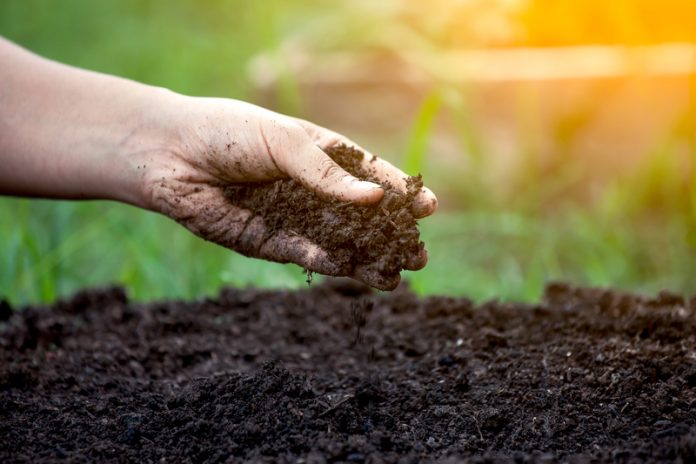Tom Sauer joined the U.S. Department of Agriculture’s Agricultural Research Service (ARS) as a Research Associate at the National Soil Tilth Laboratory (NSTL) in Ames, Iowa in the fall of 1993. He had just obtained his PhD in environmental biophysics from the University of Wisconsin-Madison under the direction of John Norman. After two years in Ames, he was hired into a permanent Soil Scientist position with the Poultry Production and Product Safety Research Unit on the University of Arkansas campus in Fayetteville, Arkansas. In 1999 he came back to the NSTL where he is now the Research Leader of the Soil, Water, and Air Resources Research Unit of the National Laboratory for Agriculture and the Environment (name changed from NSTL in 2010).
While he always had the title of Soil Scientist in ARS, his research program has covered a wide range of topics utilising many aspects of his training in soil, water, atmosphere, and plant interactions. A common factor to nearly all of these studies has been a connection to the transfer of water and energy in the environment. In Arkansas, the focus was on a by-product of agricultural production, the land application of poultry litter (manure and bedding material from chicken production). Poultry litter is typically applied to pastures of the Ozark Highlands to fertilise the forage as litter contains nitrogen, phosphorus, and other essential plant nutrients. Due to the soils and climate, however, some of these nutrients can be transported from the pastures to streams and groundwater. Reducing this transport was the goal of his research program that focused on identifying soils with lower surface runoff potential by assessing the variation in soil hydrologic properties with landscape position.
Reducing animal manure impacts on water and air quality soon led to research in agroforestry systems including a long-term alley cropping study in Arkansas and a tree windbreak study in Iowa. The alley cropping experiment, funded by the U.S. Forest Service and Natural Resources Conservation Service, included monitored nutrient cycling through soil, trees, forage, soil water, and groundwater and demonstrated that long-term poultry litter application at typical rates would likely result in concentrations of phosphorus in the surface soil that would lead to excessive transport of this nutrient during storm events. With support from the National Pork Board, a field study combined with wind tunnel experiments were used to determine the optimum placement of tree windbreaks near animal confinement buildings based on airflow patterns around the structures. Proper placement of trees upwind from the facilities reduces the wind speed and therefore the transport of dust and odour while trees downwind served as effective filters of odour constituents.
With his return to Ames also came a redirection into climate change research that led to a series of studies involving agroforestry, afforestation, and reforestation effects on soil properties. The focus of this research was on the dynamics of soil organic matter (SOM) and especially the ability of tree plantings to protect or restore SOM. Soil organic matter is a key property as it has a strong influence on many physical, chemical, and biological processes in soil especially soil water retention and water and energy flow through soil layers. Data from field sites in Nebraska and Iowa using stable carbon isotope techniques indicated that significant amounts of SOM in the surface layer beneath trees had accumulated from tree sources over a period of fewer than 50 years. The amount and rate of SOM change following tree planting were greater than expected and led to additional studies to discover the factors controlling SOM dynamics in these settings.
An important element of subsequent studies on this topic was a collaboration with Yury Chendev of Belgorod State University in Russia who was a visiting Fulbright Scholar at Iowa State University in 2007-2008. Chendev was interested in measuring the evolution of soil properties with changing land use. A collaborative grant from the Civilian Research and Development Foundation enabled Sauer and Chendev to combine their interests to study the effects of tree windbreaks on soil properties in the Russian steppes and U.S. Great Plains. Both of these regions have a rich history of tree windbreak planting to improve the local microclimate for crop production and to control wind erosion. A field expedition in Russia and two expeditions in the U.S. allowed the researchers to document changes in soil properties, including SOM, to a 1.5m depth across a range of climatic conditions. Although tree species and soil types varied between study sites, a strong relationship was discovered between a climate index and the change in thickness of the SOM-rich surface soil layer. Most tree plantings still resulted in increased SOM in the soil profile but the increase was lower at warmer and drier locations. Currently, Sauer is continuing his study of the evolution of soil properties following tree planting. With funding from the North Central Region Sustainable Agriculture Research and Education program, he is expanding the suite of soil properties being measured to include hydraulic properties and moisture retention. He is interested to discover whether the observed changes in SOM also lead to a soil moisture regime that provides greater protection from drought for both the trees and adjacent crops. This study also includes measurements of tree biomass to assess the bioenergy production potential of trees grown on marginal agricultural lands. Future efforts now in planning stages include measurement of greenhouse gas production and the microclimate modification potential of tree windbreaks in semiarid regions.
Dr. Thomas J. Sauer
Research Leader
Supervisory Research Soil Scientist
U.S. Department of Agriculture
Agricultural Research Service National Laboratory for Agriculture and the Environment
Tel: (515)294 3416
Fax: (515)294 8125
tom.sauer@ars.usda.gov











